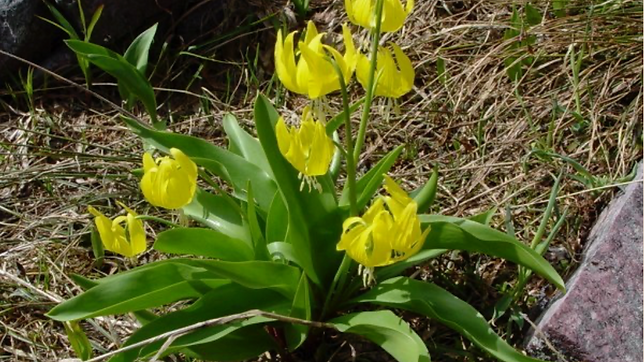
AKAMINA RIDGE
Contributed by Alan Tracey/Paul Krystof
FACTS
Country: Canada
Location: Waterton National Park
Round trip: 17 km
Start elevation: 1670 m
Final Elevation: 2565 m
Maps: (1:50,000): Waterton Lakes National Park, MCR 222, Energy, Mines and Resources, Canada; Waterton Lakes National Park, Gem Trek Publishing
GETTING THERE
From the Akamina Parkway trail head in Waterton National Park head west on the trail to Akamina Pass.
PARTIAL PLANT LIST
Erigeron compositus
Polemonium viscosum
Sedum integrifolium
Sedum lanceolatum
Potentilla nivea
Claytonia megarrhiza
Senecio conterminus
Dryas octopetala
Silene acaulis
Arabis lyallii
Smelowskia calycina
Erythronium grandiflorum
Castilleja rhexifolia




Akamina Ridge is an alpine ridge of about 4.5 km in length that lies in the extreme southeastern British Columbia. Although it lies fully within British Columbia it is best accessed from a trail leading west from Akamina Parkway in Waterton National Park in Alberta. It is a loop trail so it is not necessary to retrace any but 2.2 km at the start of the trail. The loop portion is 13 km around and is broken into three parts, the Forum Lake Trail, the Wall Lake Trail and Akamina Ridge Trail. The Akamina Ridge Trail joins the Forum Lake Trail at Forum Lake and climbs steeply to the ridge. This portion of the trail requires a degree of scrambling and might not be suitable for some. The Wall Lake Trail provides a good alternative since no scrambling is required. It does mean, however, that the length of the ridge will be traversed twice
The ridge lies at about 2400 m with the high point being 2565 m. The mountain vistas are all that can be expected when one hikes in the Rocky Mountains. Equally attractive, the plant life is diverse and often highly dwarfed because of the high winds that, over the eons, have leveled the rocky pavement.
Yellow in many places seems to be the predominant colour, there being numerous plants of the family Asteraceae, together with sedums and potentillas that are also mostly yellow-flowered. However, the high alpine polemonium, Polemonium viscosum with its deep blue flowers is also found here in abundance but in colours ranging from deep blue, to chalk blue to white. Red-flowered Sedum integrifolium can be located here and there. It is hard to say which is more striking, the plant in flower or the plant out-of-flower where the leaves with the red margins set off the plant equally as well as do the flowers.
AKAMINA RIDGE GALLERY.
Click the arrows to start the slideshow or click on an image to expand.





